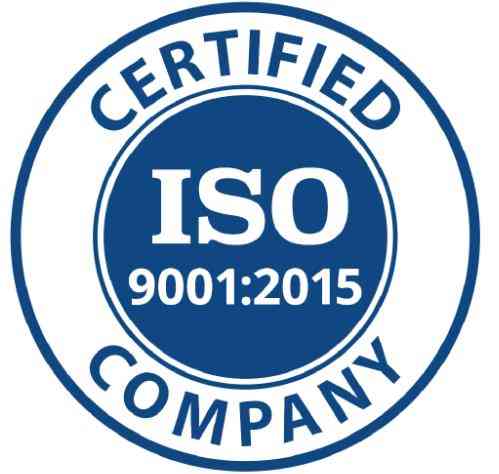|
IS0
I NT ERN AT1 O N A L O RG A N IZAT I ON FOR STAN D AR0 IZATl O N
I S O R E C O M M E N D AT I O N
R 750
FRUIT AND VEGETABLE PRODUCTS
DETERMINATION OF TITRATABLE ACIDITY
1st EDITION
June 1968
COPYRIGHT RESERVED
The copyright of IS0 Recommendations and IS0 Standards
belongs to IS0 Member Bodies. Reproduction of these
documents, in any country, may be authorized therefore only
by the national standards organization of that country, being
a member of ISO.
For each individual country the only valid standard is the national standard of that country.
Printed in Switzerland
Also issued in French and Russian. Copies to be obtained through the national standards organizations.
---------------------- Page: 1 ----------------------
BRIEF HISTORY
The IS0 Recommendation R 750, Fruit and vegetable products - Determination of titratable
acidity, was drawn up by Technical Committee ISO/TC 34, Agricultural food products, the Secretariat
of which is held by the Magyar Szabvinyügyi Hivatal (MSZH).
Work on this question by the Technical Committee began in 1960 and led, in 1964, to the
L adoption of a Draft IS0 Recommendation.
In October 1966, this Draft IS0 Recommendation (No. 1020) was circulated to all the IS0
Member Bodies for enquiry. It was approved, subject to a few modifications of an editorial nature, by
the following Member Bodies :
Portugal
Argentina Germany
Hungary Rom ani a
Australia
Brazil India South Africa,
Iran Rep. of
Bulgaria
Chile Ireland Thailand
Colombia Israel Turkey
Czechoslovakia New Zealand United Kingdom
France Poland U.S.S.R.
One Member Body opposed the approval of the Draft :
Netherlands
The Draft IS0 Recommendation was then submitted by correspondence to the IS0 Council,
which decided, in June 1968, to accept it as an IS0 RECOMMENDATION.
-3-
---------------------- Page: 2 ----------------------
ISO/R 750-1968 (E)
IS0 Recommendation R 750 June 1968
FRUIT AND VEGETABLE PRODUCTS
DETERMINATION OF TITRATABLE ACIDITY
1. SCOPE
This IS0 Recommendation describes two methods for the determination of the titratable acidity of
fruit and vegetable products :
- potentiometric reference method,
- visual method for routine control.
2. PREPARATION OF SAMPLE
2.1 Apparatus
Usual laboratory apparatus, and in particular
2.1.1 Blender or mortar.
2.1.2 Conical flask, fitted with reflux condenser.
2.1.3 Volumetric flask, 250 ml.
2.1.4 Analytical balance.
2.2 Procedure
2.2.1 Liquid or easiiy filtered products (juices, canned fruit syrups, pickling liquids, brines, liquids
from fermented products, etc.).
Mix thoroughly a part of the laboratory sample* and fiter through cotton wool or filter
paper. Pipette 25 ml of the filtrate into the 250 ml volumetric flask (2.1.3) and dilute to the
mark with distilled water which has been freshly boiled and cooled. Mix thoroughly.
2.2.2 Thick products and products difficult to flter (syrups, marmalades, jams, jeilies, etc.).
Mix a part of the laboratory sample and then disintegrate it in the blender or mortar (2.1.1).
Weigh at least 25 g of the disintegrated product to the nearest 0.01 g and transfer it to the
conical flask (2.1.2), with 50 ml of hot, distilled water which has been freshly boiled, cooled
and neutralized. Mix well, until the liquid is uniform. Fit the reflux condenser to the conical
flask (2.1.2) and heat the contents on a boiling-water bath for 30 minutes. Cool, transfer the
contents of the conical flask quantitatively to the volumetric flask (2.1.3) and dilute to the
mark with distilled water which has been freshly boiled and cooled. Mix well and then fiter.
~ ~~
*
Pending the completion of an IS0 Recommendation on the sampling of fruit and vegetable products, the term
laboratory sample is used to in the English text denote the sample as delivered to the laboratory.
-5-
---------------------- Page: 3 ----------------------
ISO/R 750-1968 (E
2.2.3 Frozen and dried products
Cut into small pieces a part of the laboratory sample, previously thawed in the case of deep-
frozen products. Remove stalks, stones, seed pockets and, whenever possible, pips. Disinte-
grate the product in the blender or mortar (2.1.1), in the presence of liquid produced by
thawing if the product was frozen. Weigh at least 25 g, to the nearest 0.01 g, and continue as
indicated in clause 2.2.2.
I
2.2.4 Freshly prepared products comprising distinct solid an
...














